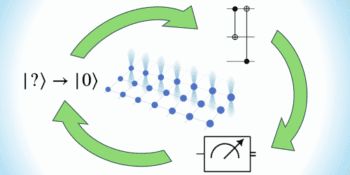Physicists are fond of billiards, both in the lab and in the pool hall. From a physics viewpoint, billiards is a game played within a hard-wall enclosure in which particles can bounce elastically. Billiards is also the embodiment of model problems in classical and quantum mechanics.
But if the shape of the billiard table is changed from a rectangle to the shape of an athletic stadium, the system becomes chaotic and turns into a pool player’s nightmare.
While chaotic billiards should be avoided in the pool hall, physicists and mathematicians welcome them as model systems for understanding the consequences of chaos in a wide range of fundamental problems, ranging from thermodynamics and statistical mechanics to quantum mechanics.
In the May issue of Physics World, Sri Sridhar of Northeastern University in Boston, USA, explains how Mark Raizen’s group at the University of Texas at Austin and Nir Friedman’s group at the Weizmann Institute in Israel have independently constructed a new type of optical billiards experiment in which ultracold atoms bounce from walls of light (Phys. Rev. Lett. 2001 86 1514 and 1518).



